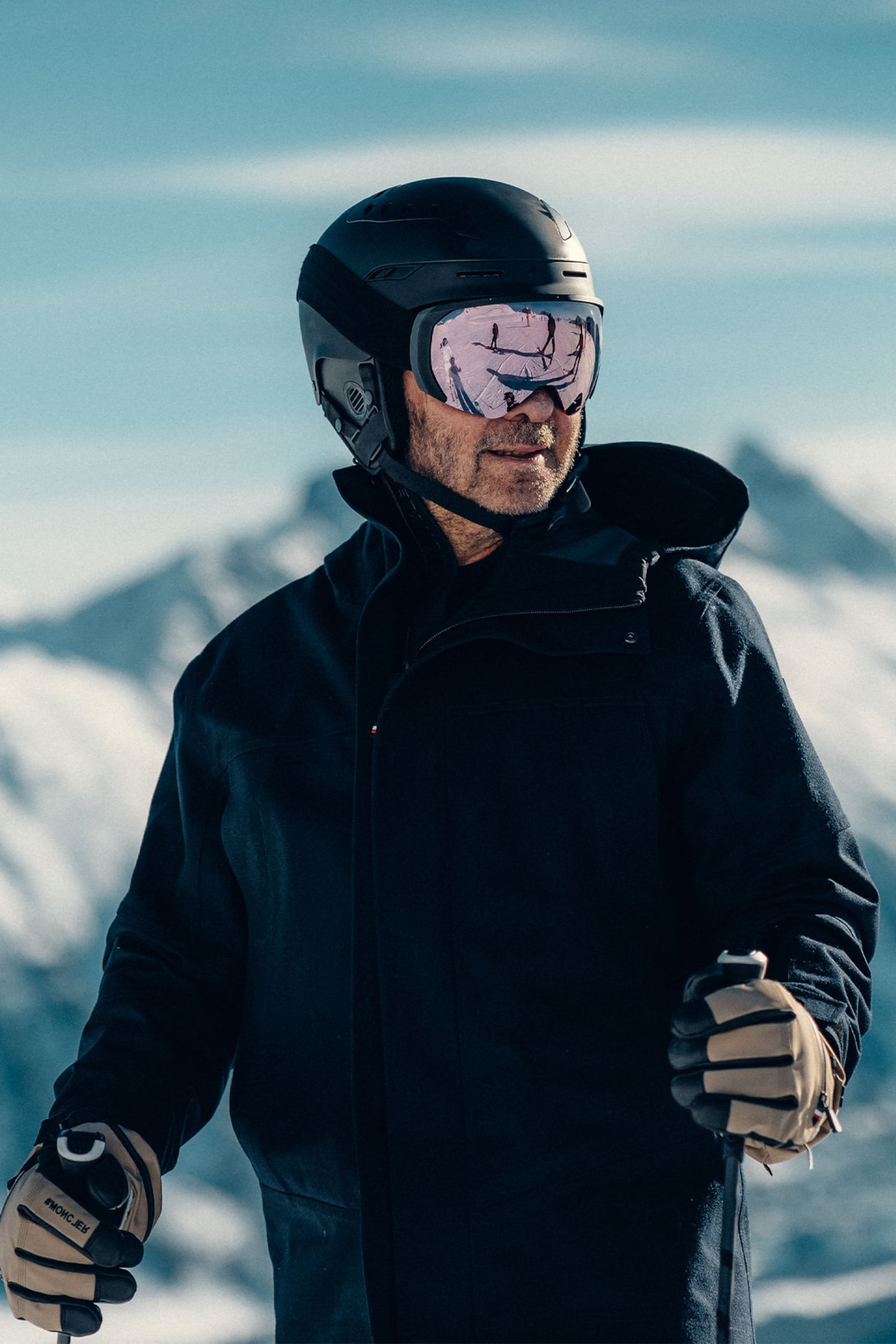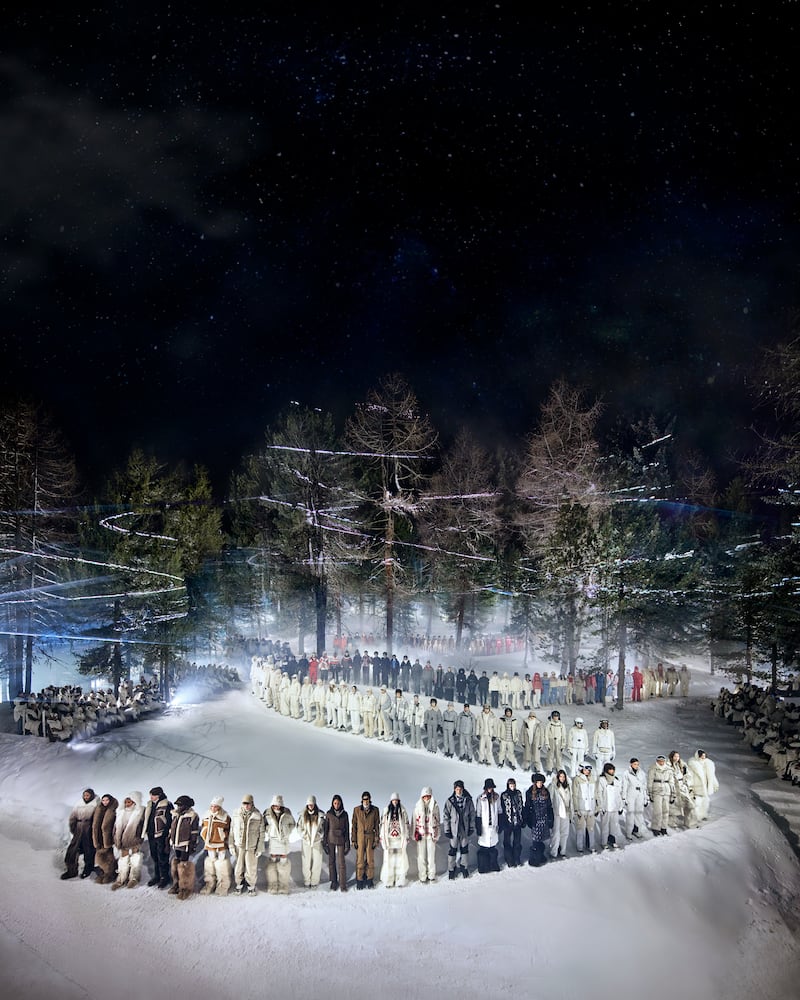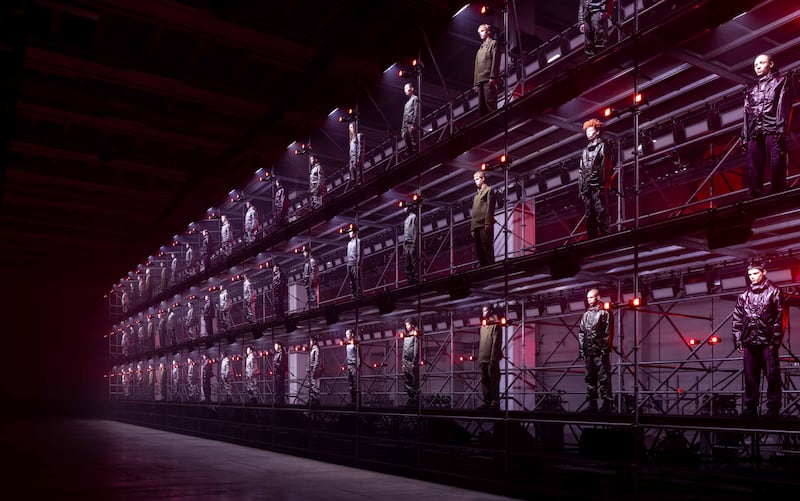
The Business of Fashion
Agenda-setting intelligence, analysis and advice for the global fashion community.

Agenda-setting intelligence, analysis and advice for the global fashion community.

MILAN – “We are the smallest of the big groups, and the biggest of the small ones,” says Remo Ruffini, founder, chairman and CEO of Moncler Group. And he plans to keep it that way.
Ten years after Ruffini’s blockbuster listing of Moncler on the Milan stock exchange (its stock leapt 50 percent to value the company at €4 billion) the Italian industrialist is celebrating strong figures for 2023 and a market valuation that’s now approaching €20 billion ($22 billion).
In its full-year 2023 figures reported Wednesday, Moncler Group revenues rose 17 percent to €3 billion, while its EBIT margin expanded slightly to 30 percent (second only to Hermès among listed luxury firms). Net cash stood at more than €1 billion.
And despite a luxury market that has slowed dramatically following a post-pandemic surge, Moncler’s growth actually accelerated in the fourth quarter across regions. It’s a significant feat in a market Ruffini describes as “very volatile, very concerning.”
ADVERTISEMENT
The secret to Ruffini’s success? Frequent revolution is required to keep standing alone in a luxury arena dominated by bigger groups like LVMH and Kering, he says.
“Every two or three years I need a new energy for myself and my company, and a new way to speak to consumers,” Ruffini explains. Five years ago his slogan — pegged to Moncler’s “Genius” initiative of frequent designer collaborations — was to take the brand “beyond fashion.” Today he wants to move beyond luxury, as well.
His push to expand the definition of luxury has taken the form of a complete overhaul for Grenoble, Moncler’s high-end mountain sports line. It’s both a new departure for Moncler — which has aligned itself with fashion more so than technical gear in recent years — as well as an effort to reassert the brand’s historic identity: Moncler rose to prominence outfitting the French Olympic ski team and K2 mountaineers for the harshest conditions.
The new Grenoble, in Ruffini’s telling, is born of “a clash” between high performance sportswear and “the refinement and sophistication of après-ski.” Its offer is cross-seasonal, and aims to tap into the idea of wellness animating consumers worldwide throughout the year, especially since the pandemic. “The idea that came to me during Covid was that people want to live out of the big cities, they want to do hiking and biking in the summer months. This a strong trend in the US, and a very, very strong trend in China,” he says.
That sporty-chic clash was embodied in a recent runway show for Grenoble held at the top of a mountain in Sankt Moritz, the ski town where Ruffini started skiing with his mother when he was three years old. The event, which provided a snowstorm of content on social media, saw models walking down a ski slope at nighttime, and was attended by A-list celebrities including Anne Hathaway. Moving Moncler’s tested formula for high-profile events from fashion week to the mountain was a key signal from Ruffini to the market as his company faces mounting competition in the skiwear space, where brands including Chanel, Balenciaga, Armani and Dior have all launched dedicated collections in recent years.
Ruffini sees his commitment to manufacture Grenoble in Europe (in Romania) as a differentiator from other mountain sports offers. “There are many small things we can do to compete with the big brands,” he says.

Ruffini is reshaping Moncler’s business model for a volatile world that includes not only sharp swings in global demand but also extreme climate events like 2022′s nearly snowless Alpine season, as global warming threatens to make thick down jackets redundant in some geographies.
Key to managing that complexity is a more focused, “three-pronged” business model resting on the main pillars of Moncler Collection, Moncler Grenoble and Moncler Genius. Collection (which accounts for some 80 percent of revenues) and Grenoble had previously gotten mixed up with more eye-catching, ephemeral collaborations as part of the Genius initiative, risking distracting customers from the brand’s core identity.
ADVERTISEMENT
As a new axis for growth beyond skiwear, Grenoble is being conceived to cover all seasons. In the flagship store on Milan‘s Via Montenapoleone, Grenoble’s products made up an eye-catching assortment that has already been expanded to include everything from coats and lightweight sports jackets to boots and shoes; from backpacks and Moncler-branded SIGG water bottles to climbing equipment. And that’s just the start.
Ruffini has opened the first dedicated flagship for Grenoble in Sankt Moritz, with ambitions to open Grenoble stores in chic ski resorts around the world. He sees Grenoble coexisting happily with Moncler Collection, whose traditional puffers live more happily in the city but can be used in the mountains. Meanwhile, Grenoble may be made for the mountains, but “a Goretex shell can also look sophisticated in the city,” he says.
Meanwhile, Genius, which was launched in 2018 and involved collaborations with designers, artists and performers, had “greater success on a cultural level than as a business.” A Genius event outside of Europe is being planned for the coming months, but Ruffini is already thinking about how he might be retooling the program once the Grenoble revamp gets off the ground.
Regarding climate change, which analysts have considered a threat to Moncler’s business model, Ruffini considers it just one of the drivers of “extreme volatility” facing business owners nowadays. “You could put them all in a box and there would be climate change, and war, and geopolitical uncertainty, changing consumers tastes.” The need to be “vigilant and flexible” — his watchwords, which he repeats several times during the interview — was brought home in the past 18 months when demand shifted from logo-mania to quiet luxury in a matter of months. Ruffini was ready for the change, with a newly pared-down Moncler Collection that caters to well-heeled sophisticates with neutral hues and barely-there branding.
Ruffini is also broadening out Moncler Group by developing Stone Island, the rival Italian sportswear brand it finalised in 2021.
“I hope it will be the last acquisition,” Ruffini says with a big laugh. The integration has been a “complex experience” as he wanted to align the culture of Stone Island with that of Moncler. There has also been the process of consolidating control of distribution by buying back franchises in regions where they were run by third parties (In the UK, for example, Stone Island owned the direct-to-consumer business but not wholesale). With that achieved, the focus is now on marketing and brand, to which end he brought in Robert Triefus, formerly Gucci’s veteran marketing and communications chief, as CEO. “It seems like a great start,” says Ruffini. “It’s going to be a slow development; we don’t want to take a short cut. My ambition is to create a great brand.”
Stone Island’s revenues for the full year grew more modestly, rising 4 percent excluding currency shifts to €411 million. But sales accelerated in the fourth quarter, up 7 percent overall driven by 16 percent growth in the direct-to-consumer channel. Positioning will be key. Ruffini makes a comparison with LVMH’s transformation of Loewe under designer Jonathan Anderson to illustrate the kind of jolt he wishes to give Stone Island. He says he wants to elevate Stone Island “not into luxury, but near to luxury,” so that it can spill over into the luxury domain (and the margins the segment offers). The first step has been to drill down into each product category, adapting the offer to appeal to various consumer tribes: The “Ghost” range offers more subtle colours and logos for the understated client, while other categories like rain shells are focused on signalling the brand’s technical credentials. Stone Island used to be a brand for “cool kids,” says Ruffini — now he wants to encourage people of all ages to come into the store.
“I am not optimistic as a character but I am convinced that with time we can turn it into a well respected brand,” he adds.
ADVERTISEMENT

Big groups have tried to pry Moncler away from Ruffini: prior to the pandemic, Kering’s Pinault family had sounded out Ruffini about selling to the French conglomerate behind Gucci, but he declined the idea. He admits it remains difficult to compete with Kering and Bernard Arnault’s LVMH in areas such as real estate, where the world’s second-richest man can drop hundreds of millions of euros on a single project — as he’s reported to have done for Dior’s Avenue Montaigne hub in Paris, with an even bigger palazzo on the Champs-Élysées currently under renovation for Louis Vuitton. But regarding brand management and competition for consumers’ attention it is all to play for, says Ruffini.
“I feel I have so much energy that I’d like to stay in this chair,” he says, tapping his armrests. “Maybe I will never sell. I have two boys, as well as having the same energy and desire to get involved that I had 10, even 15, years ago. What is more beautiful than going to the office in the week? Maybe skiing but you cannot ski every day,” he says with a laugh.
He’s also got a busy family office, run day to day by his son Pietro. Among its investments is high end seafood chain Langosteria, and a large stake in The Attico fashion label.
Given such a schedule, how does he wind down? “Mountains for me are the most important,” Ruffini says. In winter he skis, in the summer he bikes. “There, I have changed very little,” he says. The mountain is one still point, at least, in Ruffini’s spinning world.
The founders of Stone Island will now own shares of Moncler Group instead of their current stake in the Ruffini family holding company.
Ahead of its first investor day in four years, the Italian outerwear giant’s chairman and CEO lays out a strategy for the future of Moncler Genius, Stone Island, M&A and more.
The executive talks about the future of the company’s Genius project, and key opportunities for growth.
The designer has always been an arch perfectionist, a quality that has been central to his success but which clashes with the demands on creative directors today, writes Imran Amed.
This week, Prada and Miu Miu reported strong sales as LVMH slowed and Kering retreated sharply. In fashion’s so-called “quiet luxury” moment, consumers may care less about whether products have logos and more about what those logos stand for.
The luxury goods maker is seeking pricing harmonisation across the globe, and adjusts prices in different markets to ensure that the company is”fair to all [its] clients everywhere,” CEO Leena Nair said.
Hermes saw Chinese buyers snap up its luxury products as the Kelly bag maker showed its resilience amid a broader slowdown in demand for the sector.